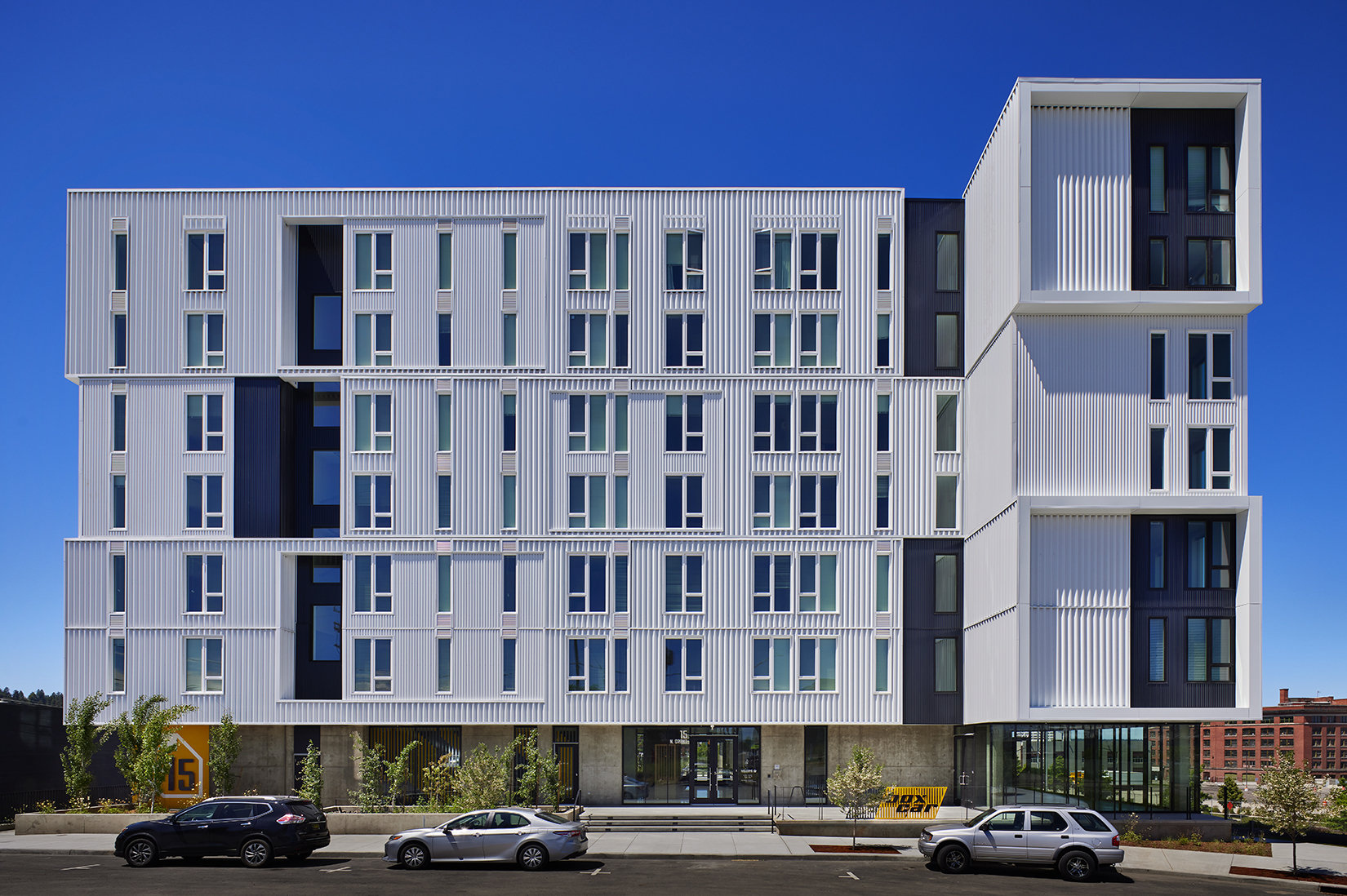Spokane, Wash., is a crucial Western United States railway intersection, connecting the entire Pacific Northwest with the inland west, the Midwest and beyond. Central to Spokane and a symbol of its regional economic forces past, present and future, the Union Pacific rail line is a defining feature of the city. The rail tracks serve the region but divide it in some places, such as the University District. This is the context for Boxcar Apartments, a multifamily project that takes its name and its design inspiration from the freight rail traffic that passes directly adjacent to it. It’s a recipient of a Judges Award.
Corrugated metal siding creates a boxcar-esque façade emulating nearby freight rail traffic
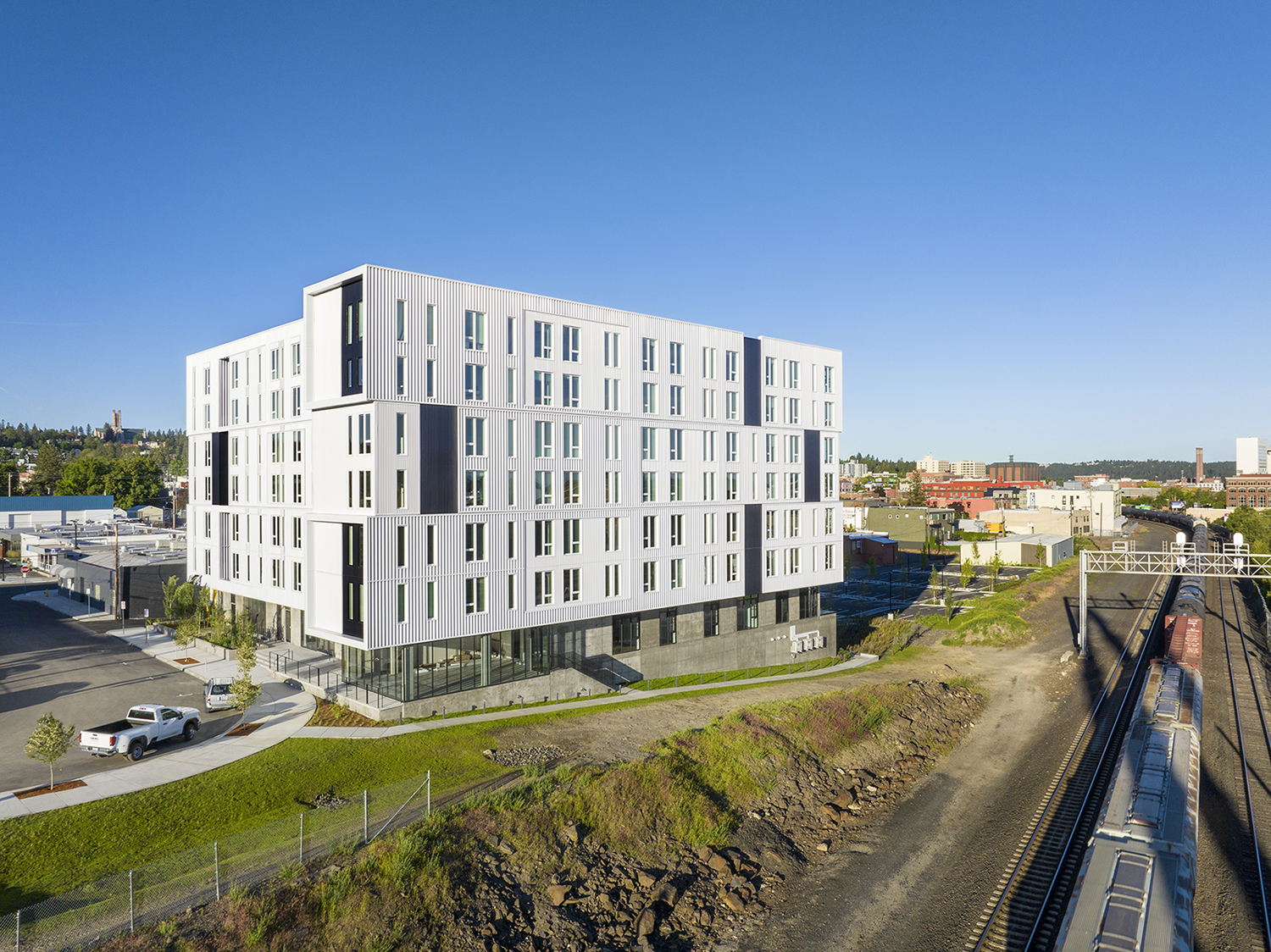
“There are a couple of things about this project that are noteworthy and unusual,” explains Tim Wybenga, principal at TVA Architects, Portland, Ore. “First, it really is in a section of Spokane that is only just beginning to redevelop and prior to Boxcar had no new residential development. When a project is really pioneering like that, the financial parameters become even more important, so cost was a huge pressure. The project sits across the tracks from Spokane’s University District and is connected to Washington State University Spokane, Eastern Washington University and Gonzaga University via a pedestrian bridge built by the City of Spokane.”
Right Side of the Tracks
The modern seven-story apartment building’s exterior envelope has a series of two-story boxcars, constructed with furring and metal siding. The metal siding and coordinated trim was supplied by Louisville, Ky.-based Metal Sales Manufacturing Corp. and Dayton, Ohio-based Phoenix Metalworks. Wybenga believes beyond the design aesthetic of the boxcars, metal was the right choice for this project in terms of first cost, life cycle cost and maintenance concerns.

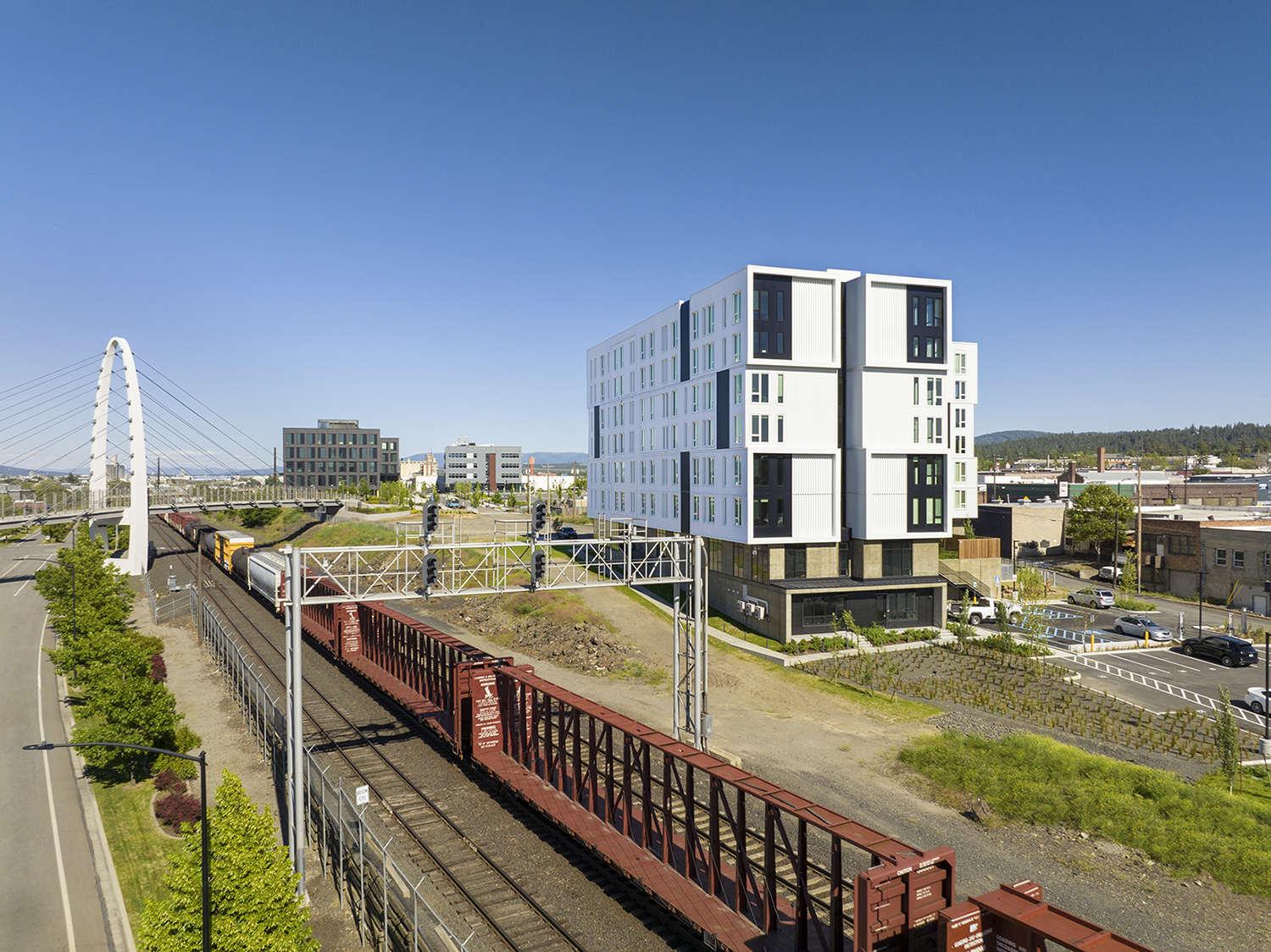
“The metal siding was really critical to the design concept here as we were clearly focused on generating a look for the building that reflected its Boxcar namesake,” Wybenga says. “To pull this off, we needed to use larger, deeper profiles than we’ve ever previously used on a building façade, and of course, we needed to be really thoughtful with the detailing. Our design idea was to use the proportions of a standard boxcar, but instead of making six residential floors into a stack of six boxcar elements, we’d detail the façade as if it were three, two-story boxcar forms. This created some unique detailing situations where the corrugation passed by the floor line on some floors whereas on others, we created a reveal to create the effect of stacked boxcar elements and to create a shadow line.” Bouten Construction, Spokane, was the project’s general contractor.
In addition to this horizontal articulation, there were other project details that required thorough coordination with the metal siding installer, Axiom Construction and Consulting, Lynden, Wash. The boxcar ends had to be projected beyond the building’s framing, which created conditions where heavy-profile corrugation had to be terminated, and a face frame and return had to be created using composite metal panel. “The Axiom design team worked through many versions of this with us through the design process, and their field team worked with TVA directly to ensure that this all worked in reality, both on our mock-up and on the building itself,” Wybenga adds. “We also elected to integrate multiple corrugation patterns within the areas of white corrugated siding on the building, in some places to deepen shadow lines—switching from a 4-inch-deep corrugation to a 2-inch-deep corrugation—and in other places we used this effect as a nod to the sliding doors of a boxcar.”

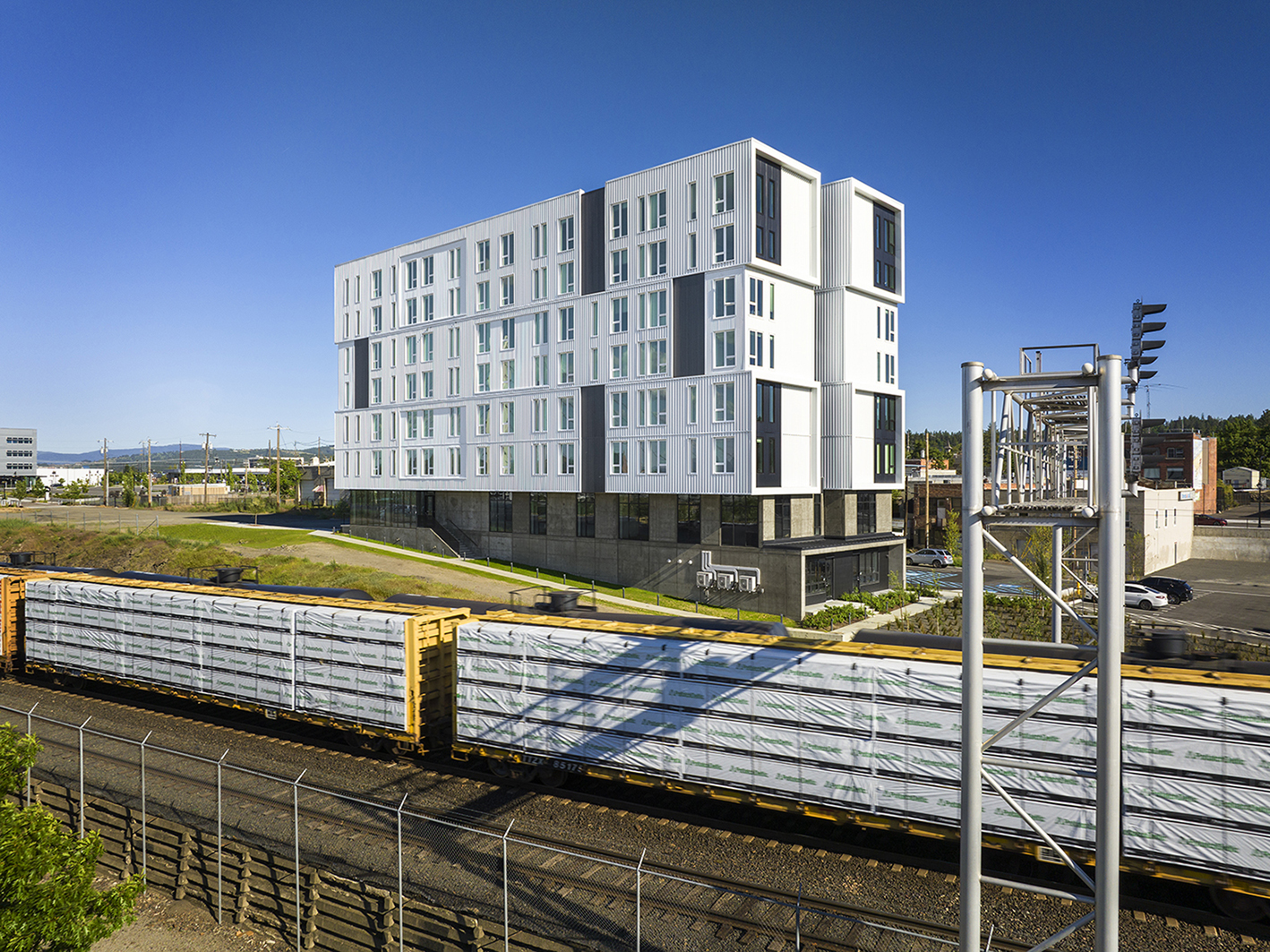
One of the biggest challenges discovered late in the project—all the way in the shop drawing process— is a horizontal slip joint had to be integrated all the way around the building between the second and third floors. “This slip joint allows for movement between the structural systems in the building, which transition from post-tensioned concrete construction to wood framing at the third floor,” Wybenga explains. “If this slip joint needed to exist between two of our boxcar volumes, it would have been fairly easy to incorporate, but instead this fell in the middle of one of our two-story elements. There was a good amount of detailing necessary to keep this new line to be minimally disruptive visually, and the Axiom team again partnered with us to make that happen.”
Judges Review
Awards judge David Sorg, AIA, LEED AP, WELL AP, said, “It’s a little bit of a ‘one-liner’ because of the boxcars. However, everything they’ve done from that point forward is extremely well done and well detailed. It’s within the spirit of taking metal and using it in a unique way. They didn’t try too hard. You don’t see the things you are not supposed to see.”
Awards judge Ron van der Veen, FAIA, LEED AP, explained, “I was impressed with what it was doing from an urbanistic standpoint. I thought it was a creative use of different panels; it created some really interesting façades. I like the one-liner, it’s nice and clean. It’s not high-end housing here. I think they did a lot with a pretty conservative budget. Typically, on a project like this you’ll see bathroom fans and you’ll see all these things sticking out the side of the building. They really composed those well.”
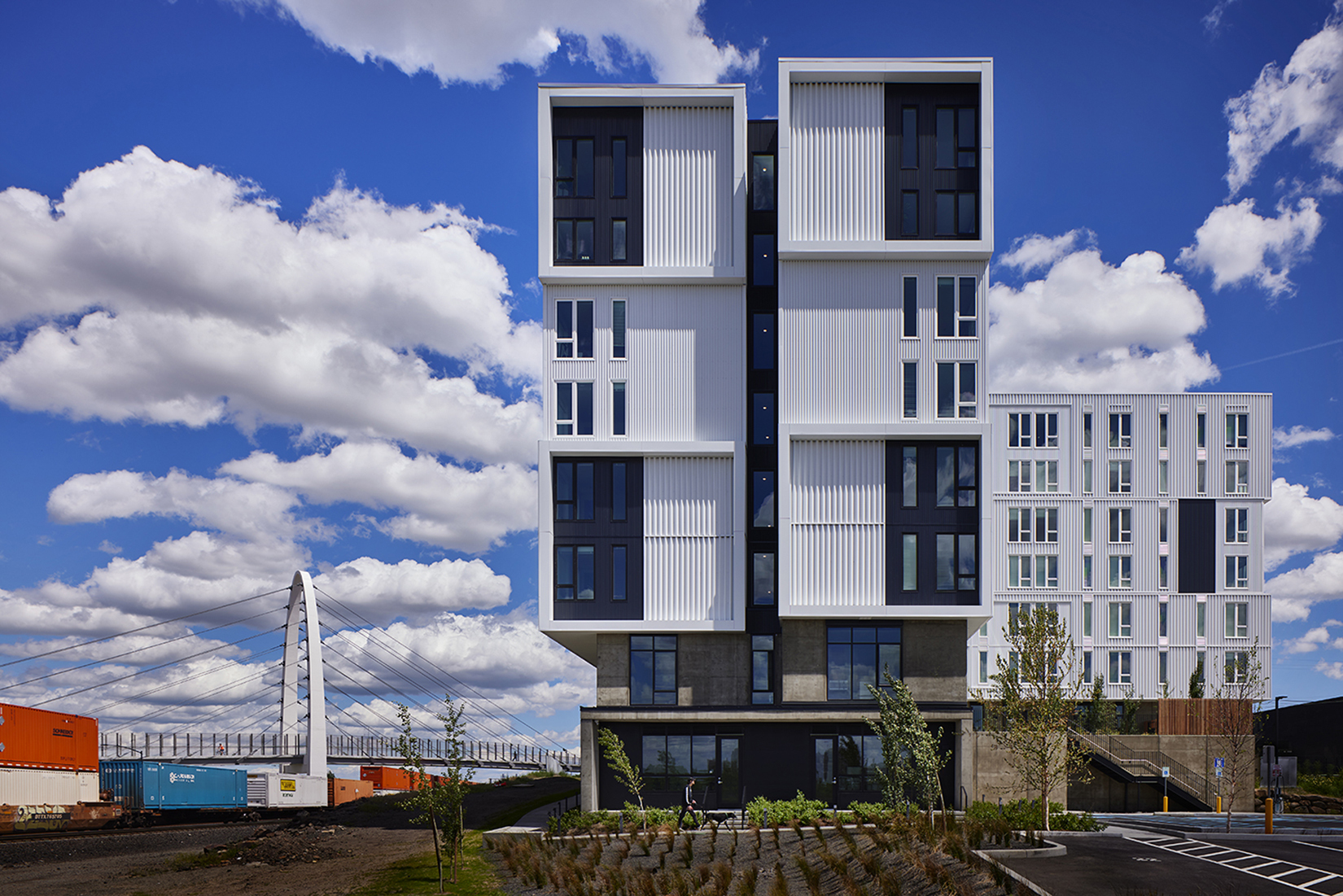
Awards judge Tania Bortolotto, OAA, ARIDO, FRAIC, LEED AP, WELL AP, said, “I liked the way they used two different colors to emphasize that elongation of the boxcars. They have the overhang at the ends, which is really beautiful. And, I like the way they used corrugated metals with the different colors as well; they detailed it to emphasize the horizontal lines. They put a lot of thought into it.”
Despite the budgetary constraints, the owner and the design team prioritized design sustainability and Boxcar Apartment has achieved LEED certification via energy efficiency, water efficiency, and a regionally appropriate landscaping and planting scheme. Wybenga adds, “LEED certification is certainly unusual for a multifamily project in this market, but this is something the developer believed in.”



